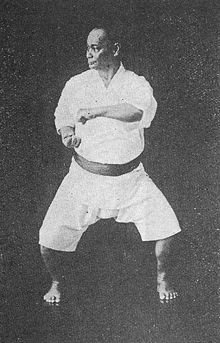Sensei Payne
Black Belt
http://www.youtube.com/user/sinisteritch?feature=mhum#p/u/3/HXhikUKrIeo
Sorry for the shaking cam.
Discuss.
Sorry for the shaking cam.
Discuss.
Follow along with the video below to see how to install our site as a web app on your home screen.
Note: This feature may not be available in some browsers.
http://www.youtube.com/user/sinisteritch?feature=mhum#p/u/3/HXhikUKrIeo
Sorry for the shaking cam.
Discuss.
I'm not sure the OP was looking at it that way Bill. On the same site there is the original version which is similar to yours (and pretty much the same as I teach), only reversed in Isshin Ryu. http://www.youtube.com/user/sinisteritch?feature=mhum#p/u/4/CeickfKVqyQOurs (Isshin-ryu) looks quite a bit different. I see some similar movements. I'd like to see the bunkai for your version of the kata; it looks as though you turn into your opponent face-first on several moves. You don't seem to know where the fight line is, and there is no lateral footwork; naihanchi is a lateral fight sequence. Of course, this is just the opinion of a san-kyu, I am no expert.
This is our founder doing Naihanchi in slow motion. Note the lateral movement and way Sensei looks to the fight line prior to turning his body; he also does not turn into a possible oncoming blow, but moves his body into position inside his own guard. Not saying our way is better; but this is what we teach and I grasp the basic bunkai of it.
 View attachment $gichin95.jpg
View attachment $gichin95.jpg